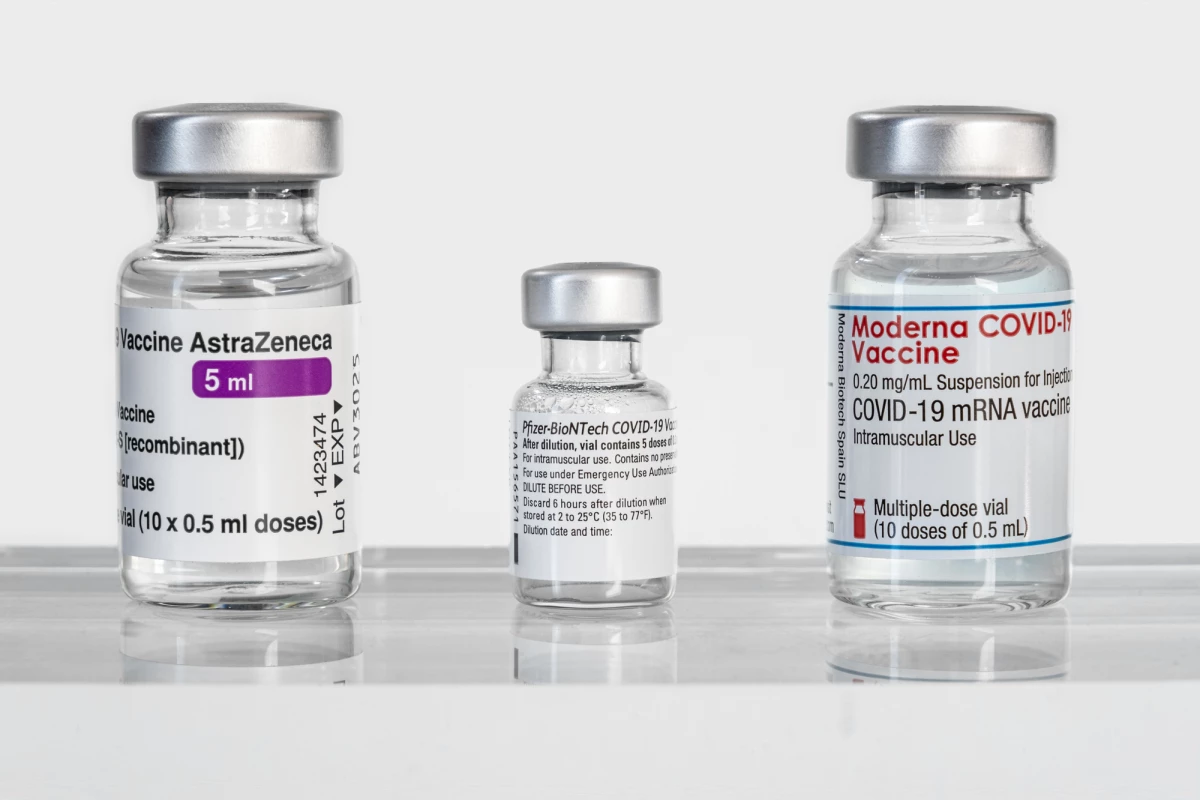A controversial dosing mistake marred last year’s announcement revealing the efficacy of AstraZeneca’s COVID-19 vaccine, but the error strangely led to better results. Now researchers from Northwestern Medicine have replicated those accidental findings and shown some vaccines may be more effective if the first dose is much lower than the second.
Late in 2020, following several promising announcements of successful Phase 3 clinical trials testing mRNA COVID-19 vaccines, pharmaceutical company AstraZeneca revealed exciting results for its vaccine candidate developed in association with Oxford University. The preliminary press announcement indicated the vaccine was 70 percent effective at preventing COVID-19.
Even more impressive, however, was the finding that a half-dose followed by a full dose led to even higher efficacy, around 90 percent, compared to the standard dose protocol. It was quickly uncovered that this half-dose protocol was actually a mistake, and not an intentional plan.
Mene Pangalos, an AstraZeneca executive working on the research program, called the error a “useful mistake.” And although the company didn’t initially disclose the fact this half-dose cohort was a mistake, Pangalos said the error was quickly incorporated into the trial as an alternative dosing experiment.
“It wasn’t putting anyone in danger,” Pangalos said to the New York Times. “It was a dosing error. Everyone was moving very fast. We corrected the mistake and continued on with the study, with no changes to the study, and agreed with the regulator to include those patients in the analysis of the study as well.”
The first phase of any human vaccine trial generally involves what are called “dose-escalation” studies. With a two-dose vaccine protocol these dose escalation studies begin by offering a few people a low first dose (known as the prime dose) and then a second “booster” shot with that same low dose. If all is safe then another few participants are administered a slightly higher dose, again using the same two-dose protocol.
“The idea is to make sure the vaccine is safe, so scientists use dose escalation to determine the ‘goldilocks zone’: what is the minimum dose of vaccine that you can give to someone while still getting a good immune response?” explains Pablo Penaloza-MacMaster, lead author on the new study.
Vaccine dose escalation studies typically deliver the same dose of vaccine from prime to boost. The mistake made in the AstraZeneca COVID-19 trial offered a unique insight into immune responses when a prime dose is lower than the subsequent boost.
This new research set out to clarify a lingering unresolved question from the AstraZeneca trial data. Because of dynamic changes to the AstraZeneca trial protocol, the cohort receiving the irregular first and second doses also experienced a longer gap between the two doses than other participants. So was the vaccine more efficacious due to the dose discordancy or was it because of the longer gap between doses?
To investigate this question the researchers looked at immune responses in mice to two different COVID-19 vaccines – CanSino and Sputnik V. Both of these are adenovirus serotype 5 vaccines, using the same viral vector as AstraZeneca’s candidate.
The study reports a low dose prime followed by a higher dose boost elicited significantly better immune responses in the mice, both qualitatively and quantitively, compared to two high doses. The researchers also saw similar low-dose/high-dose benefits with an experimental HIV vaccine that uses the same adenovirus vector as the COVID-19 vaccines. This indicates the low-dose/high-dose protocol may be beneficial with other vaccines.
One potential issue highlighted in the new study is that the initial lower prime dose did result in weaker preliminary immune responses compared to a standard prime dose. This means it is possible one may be less protected between first and second doses using this kind of protocol compared to a standard two-dose regime.
Alongside this finding the researchers also confirmed better immune responses can be generated by extending the gap between first and second doses. Penaloza-MacMaster says the problem this raises is that a lower prime dose with a longer gap may leave people susceptible to infection, and this is not ideal in a pandemic when time is of the essence.
“With a pandemic, it’s ethically challenging to extend that prime-boost interval because you need people to get fully protected as soon as possible,” says Penaloza-MacMaster. “But this approach may have its benefits in terms of improving the durability and magnitude of immune responses in the long run, which may be useful not just for SARS-CoV-2 vaccines, but also for other vaccines.”
As there has been little human research done on this subject the researchers are cautious to extrapolate their findings to humans. However, the AstraZeneca trial mistake offers compelling evidence a lower first dose and a longer gap before the standard second dose could induce optimal immune responses – at least in adenovirus vector vaccines.
The research team is now investigating immune responses to low-dose/high-dose protocols with mRNA vaccines.
The new study was published in the journal Science Immunology.
Source: Northwestern Medicine




